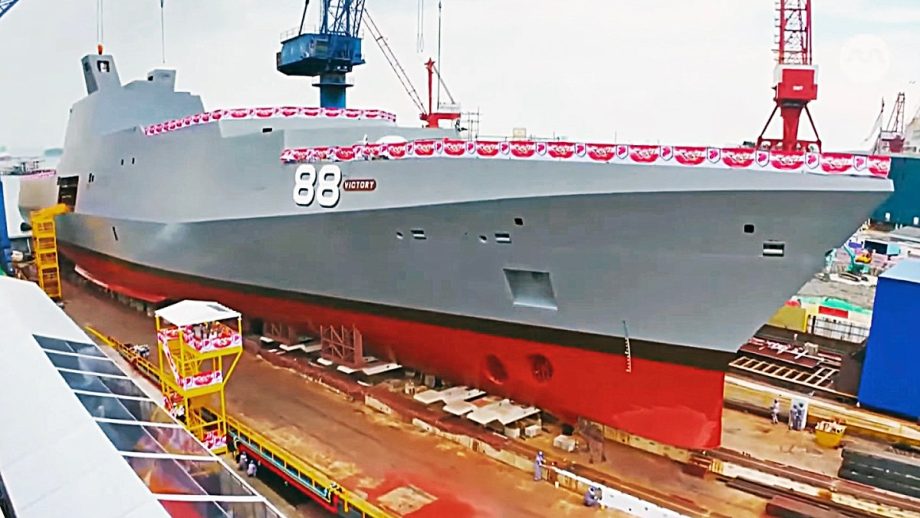Singapore today launched the first of its drone motherships, or Multi-Role Combat Vessels (MRCV). The largest and most complex ship in the Republic of Singapore Navy, the Victory is the first of a planned six of these vessels. These will replace the existing Victory class missile corvettes, which entered service in 1989, and they will form the cornerstone of the navy’s fleet modernization effort.

The Victory was launched at ST Engineering’s Benoi shipyard in Singapore, where it was formally christened by Mrs Chan, the wife of the country’s minister for defense, Chan Chun Sing.
Unusually, and somewhat confusingly, as well as the same name, the new warship carries the same pennant number, 88, as the lead ship of the Victory class MCVs.

Now that the vessel is in the water, it will move to the Gul Yard for further outfitting, integration, and sea trials. It will then be formally commissioned. The six MRCVs are planned to be delivered progressively from 2028 onward.

As a drone mothership, the MRCV is designed to support operations by uncrewed aerial, surface, and underwater systems.
At the same time, the MRCV is built according to a modular principle, so it can be more easily adapted in the future to accommodate other missions.

The vessel was also built remarkably quickly, with just 12 months between keel laying and launch. This was aided by 3D modelling and digital twinning in the design phase. This meant that the MRCV could be ‘tested’ in a virtual environment and refined before actual construction began, without the need for costly and time-consuming physical prototypes. Additional design input was also provided by Denmark and Sweden, both of which submitted proposals that were fed into the program at an early stage.
The MRCV has a fully loaded displacement of around 8,300 tons and is 492 feet long. In comparison, the Formidable class frigates displace 3,150 tons and are 376 feet 8 inches long, while the previous Victory class missile corvettes, which the MRCVs will replace, displace just 586 tons and are 203 feet 5 inches long.

Using integrated full electric propulsion (IFEP), which combines diesel engines with electric motors, the MRCV has a top speed in excess of 22 knots. In this IFEP arrangement, the diesel engines generate electricity, which is then used for both propulsion and to power other services and subsystems.
Missile armament includes MBDA Aster B1 NT long-range and VL MICA NG short-/medium-range surface-to-air missiles, which provide very significant air defense coverage, including the ability to engage certain ballistic missile targets. For anti-surface warfare, the boats will be armed with ST Engineering/IAI Blue Spear anti-ship missiles.
The MRCV is also fitted with a Leonardo Strales 76mm main gun and a pair of Rafael Typhoon Mk 30-C remotely controlled weapon stations (RCWS).













